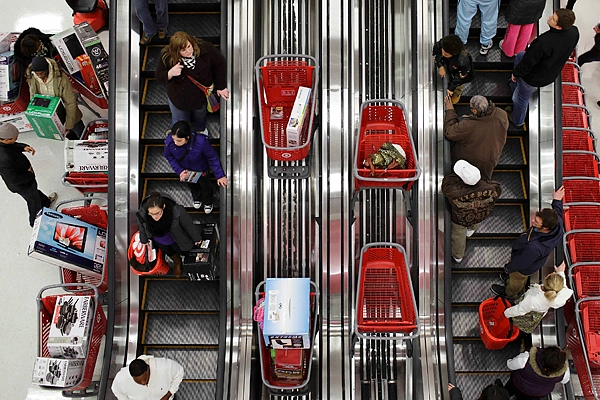
Getting clients to buy something is typically seen as the end result rather than the initial objective, but simply getting them to view your product as something to buy rather than browse is really effective. This was demonstrated in a 2007 essay by Yale, Duke, and Stanford business school professors Ravi Dhar, Joel Huber, and Uzma Khan, who described the phenomenon as “Shopping Momentum.”
The Shopping Momentum Effect explains a phenomenon that many impulse purchasers may already know to be true: after making one purchase, customers are considerably more likely to make a following, unrelated purchase. In one of the authors’ instances, participants had to decide whether or not to purchase a keychain before deciding whether or not to purchase a light bulb.
In a different illustration, the authors contrasted the effects of gift-giving to clients with those of shopping momentum. After receiving a pen as a present or being asked if they wanted to purchase one, participants had the option of purchasing a keychain. 53% of those who received the pen as a gift opted to purchase the keychain, which is not at all awful. However, 78% of people who had the option to purchase the keychain instead of the pen!
Using certain mindsets to increase the impact of the shopping momentum effect
Why do buyers tend to purchase more after doing so previously? Conceptually, this is comparable to the “Foot-in-the-Door Effect,” whereby customers are much more at ease making subsequent purchases once they’ve surmounted the challenge of making their first purchase (or creating an account or at the very least adding anything to their cart). The Dhar, Huber, and Khan study claims that the story is slightly more intriguing.
What is this’s connection to shopping momentum? The authors demonstrate that when buyers purchase the first product, it forces them into an implementation mindset rather than a deliberative mindset, increasing the likelihood that they would purchase other items. More intriguingly, they demonstrated that they could create a Shopping Momentum effect without the participants ever making a first purchase by simply getting them into an implementation mentality via a completely different strategy. For instance, when asked to write down the steps they would need to take to get a new car (which made them consider implementation), 66% of the participants chose to purchase a keychain.
Increasing consumer momentum
At two separate levels, the shopping momentum effect can be used in retail strategy.
The first tactic is to use shopping momentum as nothing more than the result of making a purchase. Deals, promotions, or very alluring loss-leaders can be used to entice clients to make a purchase, increasing their likelihood of making a subsequent purchase. Offering small items you could have given them as gifts for a dollar could also be effective, though the uptake is unlikely to be great.
Additionally, it will be incredibly beneficial if you can take any steps to lessen the friction customers face during the purchasing process. If the transaction is incredibly simple (as with Amazon’s One-Click feature), they are far more inclined to proceed with that initial bait purchase. Of course, once they’ve made a purchase, it must be simple for them to view and purchase additional goods.
The second tactic is to exploit the implementation mindset, which is the primary driver of shopping momentum. One approach may be to emphasise the procedures required to purchase a product in the area where clients might typically anticipate seeing product information (with that information moved further down the page).
You might ask your clients to think about the procedure they must go through in order to make a purchase (they are not required to respond to your query), or you could more gently ask them implementation questions like “When do you need this by? “or “How will you make your payment? ”
This is in line with research showing that getting people to think about a plan of action is one of the most effective methods to get them to follow through with behaviour. This similar concept, which was first presented in a 1965 paper by Howard Leventhal and colleagues, is now often used by political campaigns to entice supporters to vote.
Momentum on Shopping Vacations
If a customer has previously purchased from you, they are far more inclined to do so again.
This is due to the fact that people are more likely to make a purchase if they are considering doing so rather than weighing the benefits and drawbacks of doing so.
Encourage your customers to consider how they will purchase your stuff.
